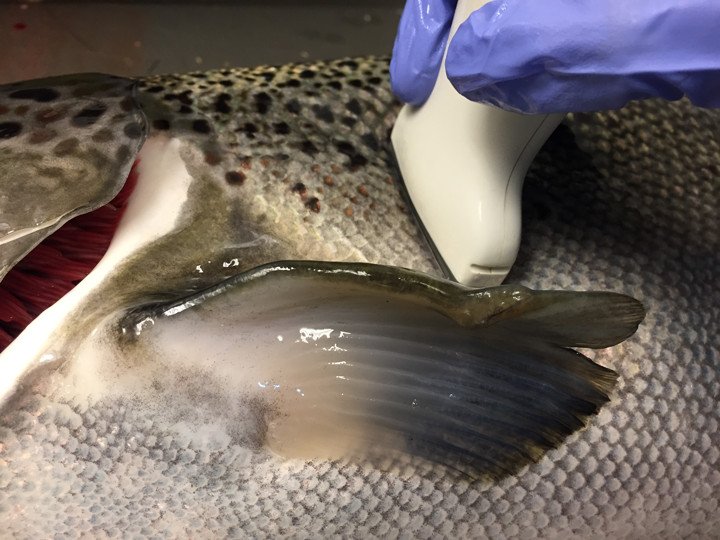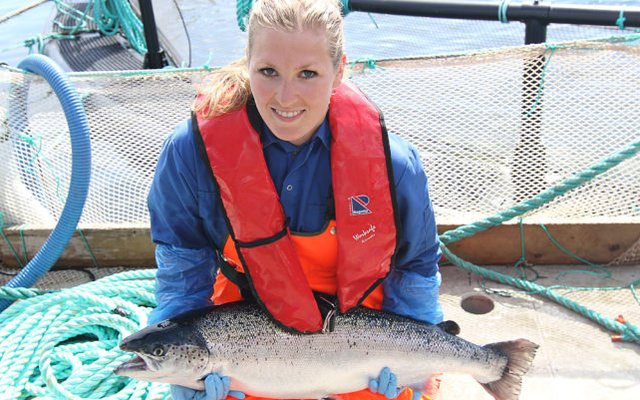AquaGen, together with NTNU (Norwegian University of Science and Technology), has supported Ingun Næve’s Ph.D. study, “Development of non-invasive methods using ultrasound in the monitoring of Atlantic Salmon (Salmo salar) production and reproduction,” to develop ultrasound technology as a method for sorting salmon parr and maturation monitoring.
Gender sorting of parr
A method of gender identification during the freshwater parr stage (from 50 g body weight) was developed using ultrasound technology. An ultrasound probe with up to 97% correct gender identification was developed with the parr having good tolerance for the procedure. This procedure eliminates the need for broodstock handling for gender identification in the seawater stage reducing stress and the risk of escapes.
Gender sorting of parr can also be used to identify the different potential of growth for females and males. In general, males are faster growing than females when they are in the same groups. In gender assigned groups, it was observed that both males and females have better growth. Females have also a better utilization of the fillet than male fish, therefore it is possible to increase the biomass through gender sorting.

Monitoring of maturation
To monitor the development of maturation, several methods were developed, such as a gentle method for the estimation of gonadosomatic index (GSI) for both males and females. This method eliminates the need for killing the breeding candidates or the need for being dependent on dead fish for the monitoring of maturation. Furthermore, the US-GSI-method can be used to identify females that are expected to mature early and late in the stripping season.
In the weeks leading up to the eggs being released into the abdominal cavity, changes in the eggs observed in ultrasound images can be used to predict maturation time. Using US-GSI, it can be distinguished between females that are expected to mature early and late, and the number of females to be handled that is expected to mature late can be reduced. This broodstock management procedure can potentially reduce the number of handling of females during a period when they are sensitive to the effects of stress on reproduction. These ultrasound methods can be used to establish a surveillance system which reduces the handling of the salmon throughout their life and the production planning and logistics can be optimized.
These results will be used for the further work on developing methods for monitoring of maturation of salmon and other commercial species, such as rainbow trout, Pacific salmon (Coho) and lumpfish, with the use of ultrasound.
AquaGen has already been applying these methods and tools in their production, and it gives an important contribution towards better fish health in the production of salmon broodstock. The newly acquired knowledge from this Ph.D is already being used for the production in AquaGen. Næve was appointed as a senior scientist and will continue to work within this and other fields in the company.













